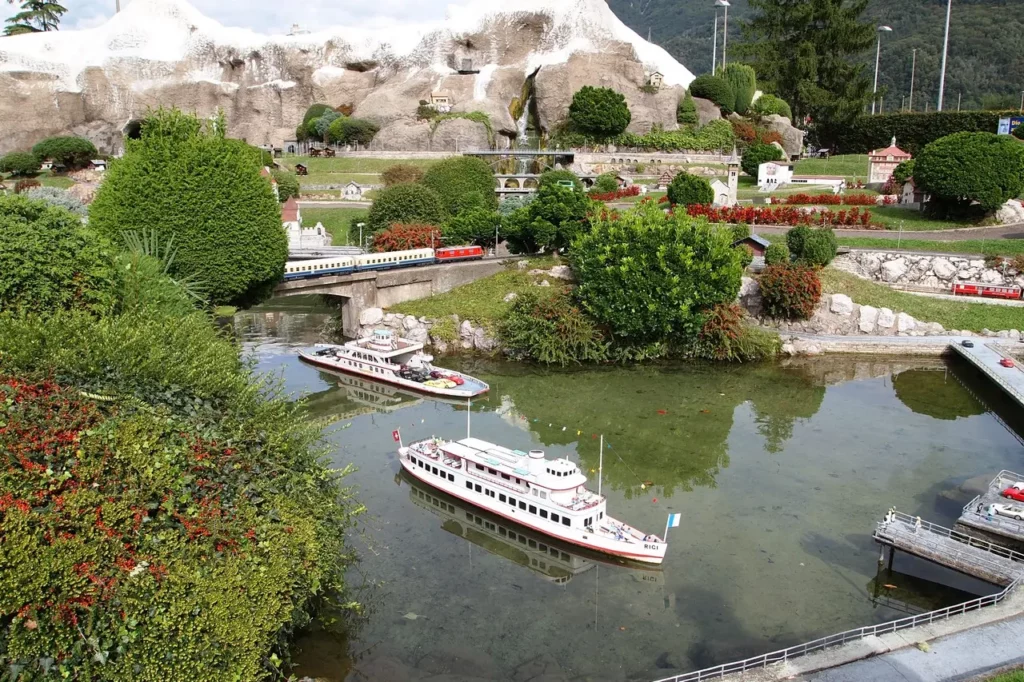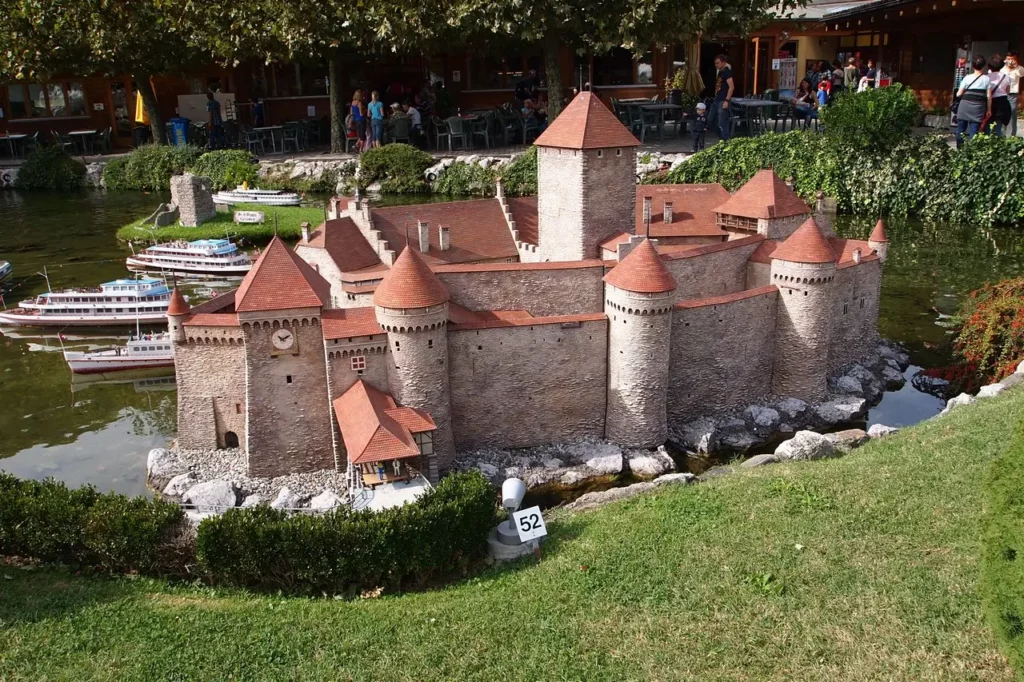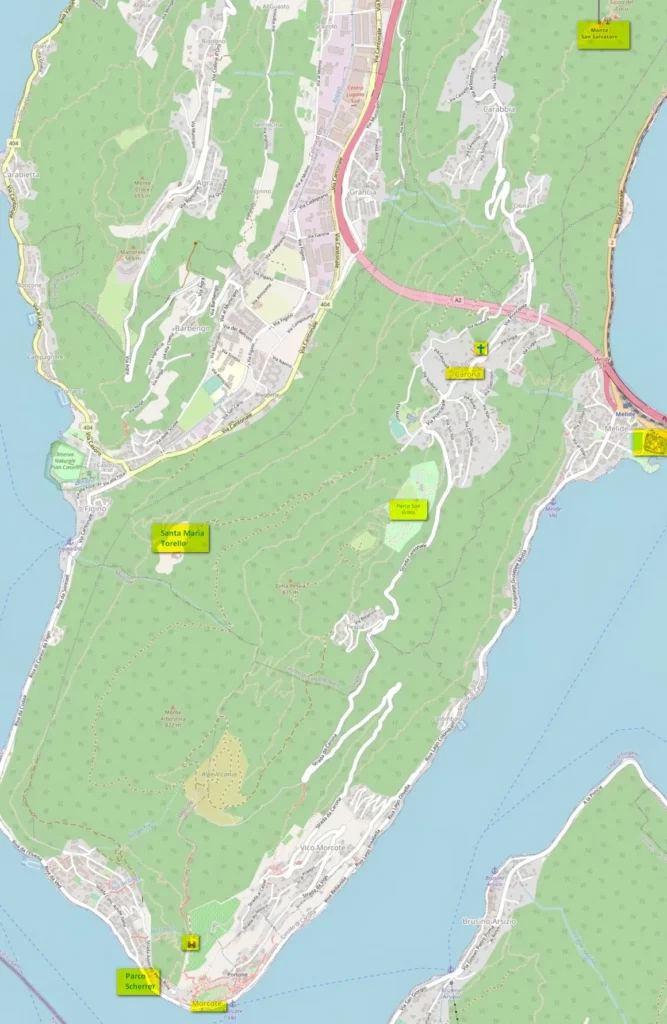Last Updated on 27/08/2024
In the first part, I talked about where you can climb on cable cars, funiculars and cogwheels and what you can see from where. In this part – about Lugano and what to visit in this part of the lake.
Lake Lugano. 3. Morcote, Caslano
Lake Lugano attractions map
Ticino attractions map. Locarno, Bellinzona and valleys
Ticino guest cards and public transport Ticino
Ascona / Locarno. 2. Island Brissago
Lake Maggiore. Locarno and Ascona
5 best viewpoints of Lake Lugano
Valle Maggia
Centovalli Valley
Verzasca
Lake Maggiore Attractions of Italian part
Lugano
Since the many reviews about the city itself are not the most enthusiastic, we prefered to visit the observation point on San Salvatore. And I think, it was right decision. Towns in Switzerland, especially big, are not the strongest side of the country.
But if you have more time or accomodate in Lugano, then you can explore the city.
History
The shores of the lake were inhabited already in the Stone Age. In the 1st century BC the Romans settled in the region. North of Lugano, Bioggio was an important Roman city.
The first mention of the settlement dates back to the 8th century. In 984 it was already a market town called Luano. Since 1189 the city has been known by its real name. The city was one of the places where the Guelphs fought against the Ghibellines, Como and Milan competed for power over it, until in 1513 it became part of the Swiss Confederation.
Lugano is a resort town, but not only. There are many shops here, it is a financial center, and there are several educational institutions. As a result, there are a lot of people.
Like Locarno, it is located on a slope. From the station to the center, you need to go down the steep streets or take the funicular. The mountains bordering the coastline of Lugano can be climbed. On the left, facing the lake, Monte Bre, on the right – Mount San Salvatore. Read about viewing points in the first part.
Lugano Attractions
In addition to the two funiculars to the nearest mountains, there are the following attractions.
Museums (they are not a mustsee, rather for those, who are interested):
- art museum (Museo d’Arte, 20th century art and temporary exhibitions),
- cantonal art museum (Museo cantonale d’arte, cantonal artists, temporary exhibitions),
- Villa Ciani (temporary exhibitions ),
- the cantonal natural history museum (Museo Cantonale di Storia Naturale),
- the cultural museum (Museo delle Culture, ethnographic museum).
More interesting are the churches: the Cathedral of St. Lorenzo (Cattedrale di San Lorenzo, late 15th – early 16th century) and Santa Maria degli Angioli (1500, with frescoes by Leonardo da Vinci’s student Bernardino Luini).
Well, even more interesting can be parks:
- a public park (Parco Civico, a picturesque park on the coast, with flowers, exotic trees and trellis – a favorite object for photography),
- a small park of the Villa Saroli,
- also a small park of the Villa Florida,
- the park of the Villa Heleneum (around the Museum of Cultures).
Follow me
Gandria
Gundria is heavily advertised, although the photographs do not give the impression of something stunning and unique. The village has recently become part of the Lugano metropolis and a hiking trail has been created from the city to Gandria along the lakeside, through olive groves.
The settlement in its present place has existed since the 14th century. Earlier it was higher. The Celts were the first to settle in these places. In the vicinity there is a stone with inscriptions, supposedly used by the Celts for religious purposes (Sasso della Predescia).
Since the village is very close to the border with Italy, smuggling has always been actuell here. The Swiss Museum of Customs is located opposite the village, on the other side of the lake, in the “suburb” called Cantine di Gandria, which means “cellars of Gandria”. Food and wine were kept there, because it was always cool there. The Cantina di Gandria is only accessible by water.
Melide Swiss Miniature
Every time, looking at the lake from above, I wanted to remove this ugly partition across the lake. It has not existed for so long. At the beginning of the 19th century a road was built and a ferry crossing was organized. To build a dam was the next obvious decision, especially since the depth in this place was shallow. It appeared in the middle of the 19th century. A small bridge was made for the circulation of water and the passage of ships. Later, a railway line, an autobahn were added, the dam was built up with houses. And now, of course, it will not go anywhere, but I would like to!
The town is quite small. Its main attraction is the Melide Swiss miniature park (Swissminiatur). The park is small. Conveniently, the attractions are located along a circular route and are mainly grouped by canton. This is much more correct than in Madurodam, where houses from different cities can be collected in one place, and this makes the sights lose their recognition.

But there are fewer additional interactive attractions than in Madurodam, moving exhibits are not so well thought out. That is, it turns out more informative in the sense of exploring attractions, but less interesting. For an additional fee, you can ride a mini-train (rides on the rails laid around the park), play on the machines. Well, the cost of an admission ticket, as usual in such parks, slightly exceeds the pleasure of visiting.

Something quickly comes to mind. Town Hall in Schwyz.
Read about Schwyz.

Stein am Rhein.
Read about Stein am Rhein

Steam boats on Lake Lucerne.
About Lake Lucerne – #LakeLucerne

Chillon Castle

The surrounding mountains add extra flavor. San Salvatore on the left, Monte Bre and Baglia on the right in the background.

Carona
To finish with the middle part of the lake, let’s also mention Carona. It is a village on a hill that stretches from Lugano to Morcote.
You can get there on foot from San Salvatore (an hour and a half) or from Melide (also an hour and a half) or by bus 434 from Lugano.

The village has been mentioned since 926. In addition to agriculture, architecture and painting were also among the interests of its inhabitants. Entire families were renowned for their talent in this area. During the summer months they worked in different cities, and in the winter they returned to the village. Thus, one of the Karon masters named Marco from Carona was the main architect of the Milan Cathedral for several years.
In modern times, people of art do not leave the village, but, on the contrary, come to it – permanently or for the summer. The most famous of these villagers was Hermann Hesse.

There are as many as six churches in and around the village. The most interesting are the church of St. George 15th century in the village itself and Santa Maria. It is a 13th century monastery church with partially preserved frescoes, which is located on the road towards Figino. Now privately owned and it is not clear if there is a possibility to get inside. There are also several houses from the 16th century.
One of the main attractions of the village is San Grato Park. It is better to visit it in spring, when rhododendrons and azaleas bloom, which make up the heart of the collection.
Other sights of Ticino – #Ticino
Do you enjoy the site without cookies? This means that I work for you at my own expense.
Perhaps you would like to support my work here.
Or change your cookie settings here. I don’t use personalized ads







